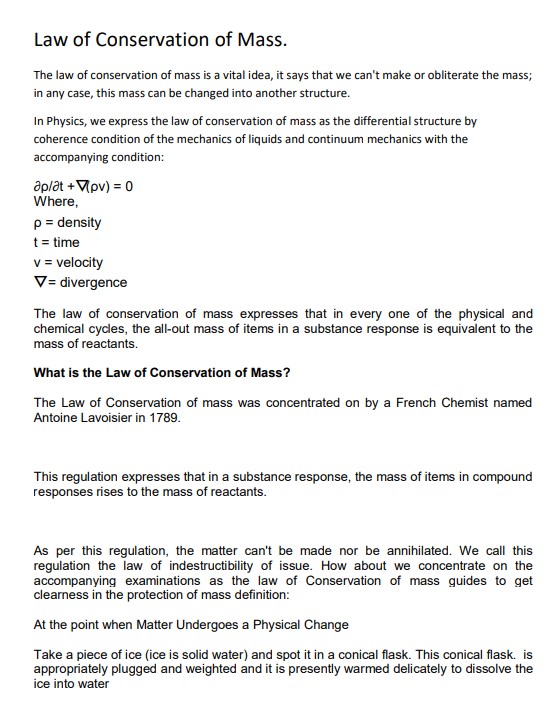The Law of Conservation of Mass
Summary:
The Law of Conservation of Mass states that mass cannot be created or destroyed but can be transformed into another form. In physics, this law is expressed as a differential form through the continuity equation of fluid mechanics and continuum mechanics. It states that the change in density with respect to time, combined with the divergence of the product of density and velocity, is equal to zero. This law applies to all physical and chemical processes, where the total mass of substances involved in a chemical reaction remains constant. Antoine Lavoisier, a French chemist, studied and formulated this law in 1789, emphasizing that matter cannot be created or destroyed. Through various experiments and examples, such as the physical change of ice melting, chemical reactions forming precipitates, the dissolution of mercuric oxide, and the combustion of wood, the principle of the conservation of mass is demonstrated. In each case, the mass of the reactants before the process is equal to the mass of the products after the process, confirming the validity of the law. This principle highlights that matter is conserved and undergoes transformations rather than being created or destroyed.
Excerpt:
Law of Conservation of Mass
The law of conservation of mass is a vital idea; it says that we can’t make or obliterate the mass; in any case, this mass can be changed into another structure.
In Physics, we express the law of conservation of mass as the differential structure by coherence condition of the mechanics of liquids and continuum mechanics with the accompanying condition:
∂ρ/∂t +⛛(ρv) = 0
Where,
ρ = density
t = time
v = velocity
⛛ = divergence
The law of conservation of mass expresses that in every one of the physical and chemical cycles, the all-out mass of items in a substance response is equivalent to the mass of reactants.
What is the Law of Conservation of Mass?
The Law of Conservation of Mass was concentrated on by a French Chemist, Antoine Lavoisier, in 1789.
This regulation expresses that in a substance response, the mass of items in compound responses rises to the mass of reactants.


Reviews